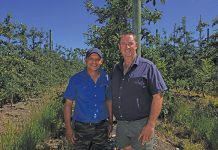Eskom has been running an electricity conservation programme called Demand Side Management (DSM) since 2003, which encourages consumers to use less electricity especially during peak times (6:30am to 10am and 5pm to 9pm). Because peak consumption has increased 15% in the last 10 years, the initiative aims to save 153MW each year for the next 20 years and to increase demand saving to 4 200MW in the same period – equal to the output of a six-unit power station. DSM projects in agriculture, sponsored by Eskom, have saved some farmers thousands of rand and include subsidising 50% of the capital cost of approved projects such as converting lighting and air-conditioning to energy-efficient systems, and 100% subsidisation of approved projects that shift demand to off-peak times. Eskom proposes the following energy-saving tips for farmers:
Install capacitors on oversized electric motors to store electricity.
Ensure the correct irrigation piping diameter to reduce friction and thus the power required to overcome it.
Where higher ground is available, use gravity to irrigate crops. Even if the ground isn’t high enough for gravitation, less electricity will still be needed to pump water from the storage dam.
Ensure that cold-room doors are sealed properly.
Don’t overfill cold rooms because this will hamper air flow and increase the time needed to cool down produce.
Install compressor rooms and condensers on the south-facing side of buildings because of less direct sunlight.
Wash the milking machine directly after milking in the mornings and wash the complete cycle in off-peak times.
Build the ice bank during off-peak times. This will keep milk cool during Eskom’s peak hours.
Increase the capacity of a feed processing plant to do the same amount of work per day in fewer hours.
Install proper roof installation in animal houses to ensure a cool environment in summer and warmth in winter. This will require minimal additional electricity inputs to maintain optimum temperatures.
When using natural ventilation for animal housing, ensure that the building is not wider than 12m, and that the long wall faces the direction from which the prevailing wind is coming. This will ensure the optimum use of natural ventilation.
The roof must also have a ridge through which heat can escape. During certain stages when drying grains, oilseeds and lucerne, a number of dryers can be switched off for two hours during peak times. The heating elements can also be switched off completely with only the fans running.
Recirculate heated air in closed environments to save on energy costs.








